A pioneer of the medium, Ernie Kovacs was a force in television comedy, influencing everything from The Muppet Show to Max Headroom. One TV critic called him “television’s first significant video artist.” But he’s not exactly trending these days. Homages to Kovacs, such as in the 1997 Friends episode in which Joey’s new girlfriend and Chandler bond over a mutual love of Kovacs, are rare.
A Kovacs renaissance is due, and perhaps a new coffee table book, Ernie in Kovacsland: Writings, Drawings, and Photographs from Television’s Original Genius, might kick things off. Co-written by Josh Mills, son of Edie Adams, who was married to Kovacs for eight years, the book contains essays and fan appreciations, as well as a wealth of material from the family’s voluminous archives, including coffee-stained scripts, humor pieces, an excerpt from his cult novel Zoomar, an outline for an unrealized film project, elements from a long-lost side two of an album featuring Kovacs’ popular character, the imbibing poet Percy Dovetonsils, a trove of personal photos, and other Kovacs memorabilia.
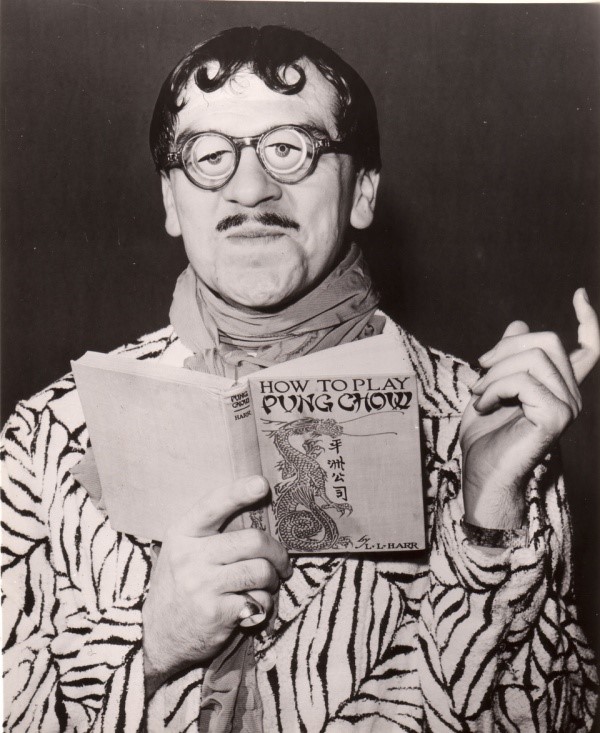
Kovacs, who died in a traffic accident in 1962 just shy of his 43rd birthday, “had the sort of talent for which television was invented,” The New York Times obit reported. “He worked with equal ease and persistence in movies, theatre, radio and writing. But he flowered on the nation’s television screens with his highly improbable and flammable humor, the kind that used the camera as a prop and could never be adequately described.”
We’ll try: Kovacs used the fledgling medium to explore what it could do in ways that were revolutionary. Perhaps his signature creation was the Nairobi Trio, trenchcoated musicians clad in gorilla masks who performed routines to the tune “Solfeggio.” The Kovacs touch was hilariously inventive visual gags that could leave the viewer in a state of, “What am I watching?” such as a woman whose bath is interrupted by the emergence of a submarine periscope; a music piece “performed” by a filing cabinet, typewriter, water cooler, and other office equipment; and a prime time special featuring another iconic character, Eugene, in which not a word is spoken.
The Nairobi Trio (Uploaded to YouTube by Kovacs Corner)
Kovacs’ subversively funny comedy has influenced generations of future comedy icons. Chevy Chase acknowledged him in his 1976 Emmy acceptance speech. David Letterman’s Late Show indulged in Kovacsian stunts, such as the so-called 360 show, in which the image slowly rotated a full circle over the course of an hour.
Eric Idle confirmed that Kovacs was an influence on Terry Gilliam, the lone American-born member of Monty Python’s Flying Circus. Alan Zweibel, a member of Saturday Night Live’s first writing staff, said, “Ernie was our hero and his approach to comedy using the very medium of television inspired us.”
Garry Shandling, too, was a fan, according to Mills. “Garry and Alan hired my mom for It’s Garry Shandling’s Show, he says. “Gary very much wanted to break the fourth wall (as Kovacs did) and they would pick her brain about what would Ernie do. They were very good friends in the 1980s onward.”
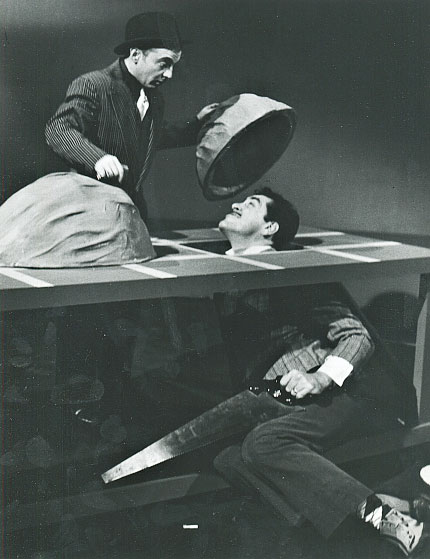
Mills spoke with The Saturday Evening Post about compiling the book’s treasures, Ernie’s standing among comedy buffs, and why he thought the TV series The Addams Family was based on his household.
Saturday Evening Post: In book publishing, as in comedy, timing is everything. Why now for a book about Ernie Kovacs?
Josh Mills: This process started five years ago. I had a lot of really cool stuff in the archives that my mom had saved. I was thinking it’s too bad I was the only one who could see this, and that maybe there was a a lot more that could be done with this than having it just sitting in my garage. My mom did save everything. We pulled some choice stuff. We also went to the UCLA Film and Television Archive and looked at the materials she donated there.
SEP: What was your mission statement for the book?
JM: I knew it wouldn’t be a chronological biography. I wanted a peek into Ernie’s brain. He was constantly working on stories, books, a record that was never released. It was like, let’s throw this stuff into a blender and see what comes out.
SEP: Why do you think Ernie Kovacs isn’t more widely known today?
JM: Ernie was never a guy who got ratings like Milton Berle or Jackie Gleason. One thing he did for networks was get them great press. He was great at what he did. It was just very different. How did he know the radical things he attempted would work? He was like the Andy Kaufman or Adult Swim of his day; he appeals to people a little off-center. I think that’s exactly where he wanted to be.
SEP: In one of the essays in the book, [musician and historian] Ben Model writes, “Mention Kovacs to someone who does know Kovacs and watch their face light up. Instantly, you know you’re both fellow members of a secret club.”
JM: Comedy fans know. Ron Mael, from the band Sparks — a big fan — wrote an appreciation for the book about the Nairobi Trio. Howard Stern used to talk about wanting to be the new Ernie Kovacs.
SEP: How did you discover Ernie Kovacs? He died before you were born. (His father, photographer Martin Mills, married Edie Adams in 1964.)
JM: I can’t pinpoint when somebody said, “Ernie” and I said, “Oh, you know who he is?” Ernie was always there. I grew up in the house that my mom and Ernie lived in. As I said, she saved everything. There was everything from TV Guide covers to his Emmy all over the house. I didn’t know who he was to me, but somehow, he was part of the family. In my young brain, I always felt The Addams Family was based on our family. My mom’s last name was Adams, Ernie’s den looked a lot like The Addams Family house, with the dueling pistols, suits of armor, a rhinoceros head; It was all there. And John Astin [who portrayed Gomez], knew and was friends with my mom. He looked like Ernie with the cigar and mustache. I didn’t quite know how it all fit.
SEP: For those new to Ernie’s work, what would you recommend they watch first?
JM: The Nairobi Trio is what he may be most recognized for, but his ABC specials are a highwater mark. He experimented with the medium and tried to play with what this technology could do. He gave a lot of leeway to his crew to create a lot of the gags.
A clip from the ABC Special from December 12, 1961(Uploaded to YouTube by Shout! Studios)
SEP: What is your hope for the book?
JM: As Ernie might say, I’m trying to link pinkies across the orthicon [television camera] tube. I hope people who know about Ernie will get excited about him again, because this is definitely stuff no one has ever seen before. It’s also a good primer for people who have heard his name, and might inspire them to look into his work.
You can purchase Ernie in Kovacsland: Writings, Drawings, and Photographs from Television’s Original Genius by Pat Thomas, Ernie Kovacs, Josh Mills, and Ben Model from Bookshop.com.
Become a Saturday Evening Post member and enjoy unlimited access. Subscribe now
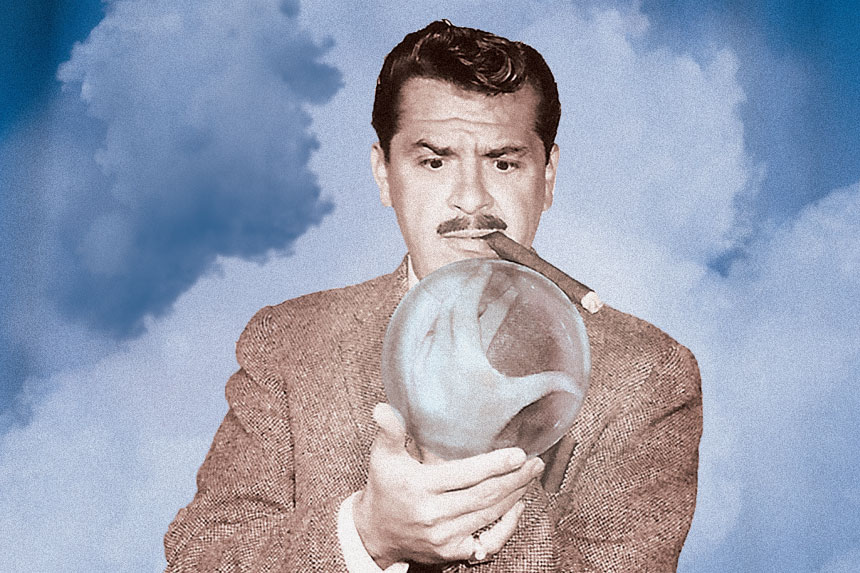
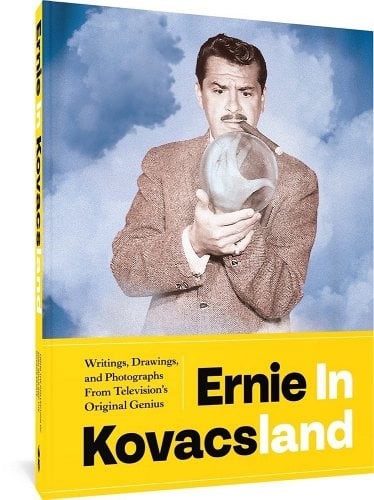

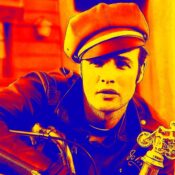
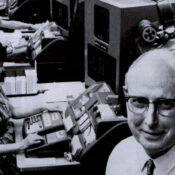
Comments
I grew up watching Kovacs. He’s the comic genius! He also did a summer stand – in show that was absolutely hilarious. Some of the best comedy I’ve ever witnessed. A Dutch Master cigar commercial hilarity
Kovacs was the best! I saw his “Best of Ernie Kovacs” show on PBS in the 70s and my High School buddies and I got a Super 8 camera and tried to film a few Kovacs-style gags (like some fun stuff with a street sign that said “Dip.”)